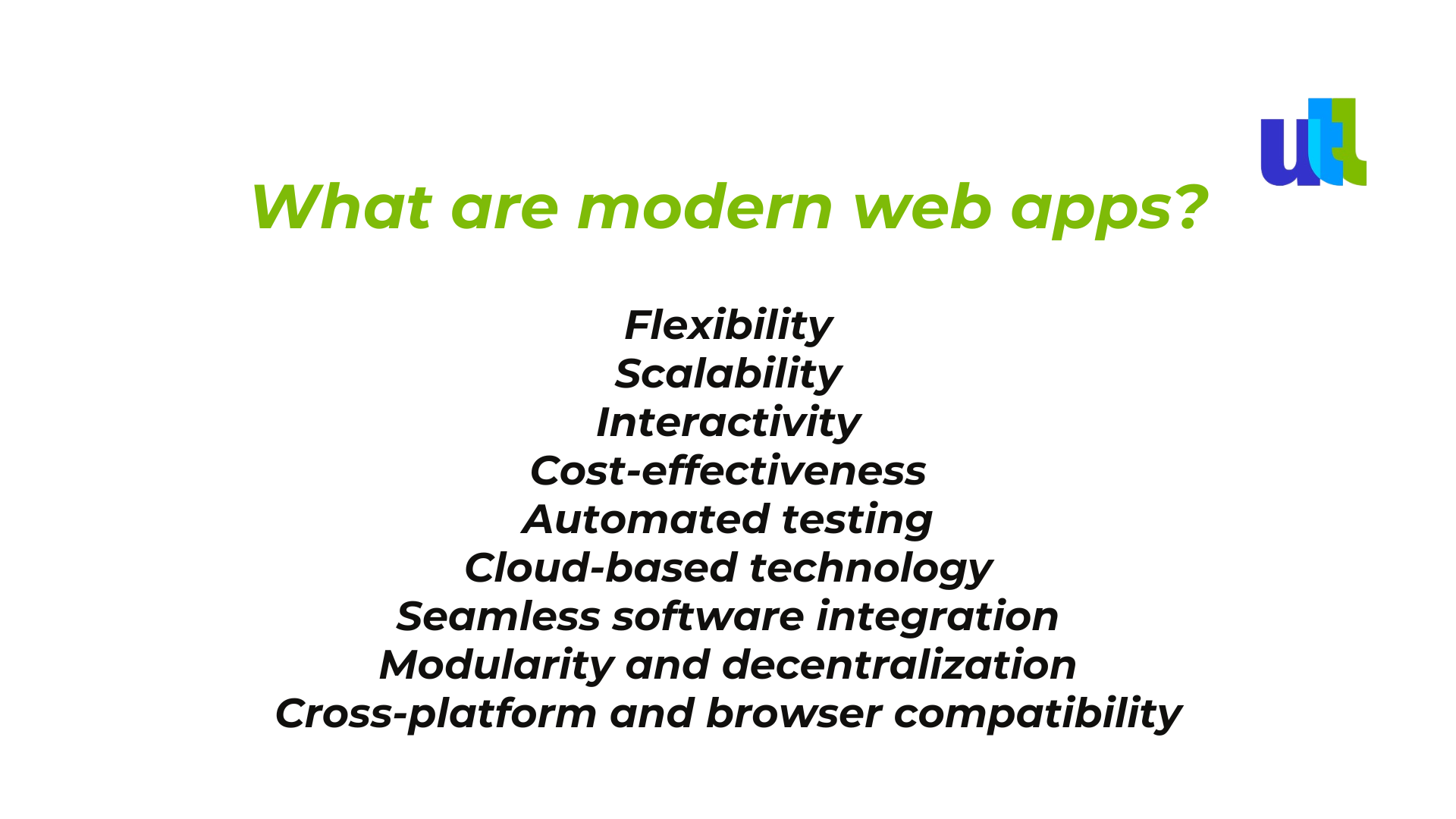It’s simple: today users expect more than ever. They want to access web apps from any device and any operating system 24/7. They expect their apps to be secure, fast, flexible, intuitive, and smooth. At the same time, they shouldn’t take up too much storage space or use too much data. As a service provider, you want your apps to be easily scalable and as modern as possible, right? Then, this article is for you.
Web application development is the creation of application programs that reside on remote servers and are delivered to the user’s device over the Internet. A web application (web app) does not need to be downloaded and is instead accessed through a network. An end user can access it through a web browser such as Google Chrome, Safari, or Mozilla Firefox. Most web applications can be written in JavaScript, Cascading Style Sheets (CSS), and HTML5.
A web application can be described as a client-server computer program that the customer runs in an internet browser. It incorporates the client-side and user interface. Great examples of the most popular web apps include instant messaging services, online retail, and webmail.
Modern Web applications ought to be secure, adaptable, and scalable to meet future spikes in demand.

The answer is simple.
They should follow the latest web and app development principles. These help developers create excellent apps that can adapt to the ever-changing technology trends and meet current and future customers' requirements. Let’s move on to the principles.

Principles of modern Web Application Development
Here are six essential principles of modern web application development, that make web apps uniquely suitable to meet the demands of today’s tech-savvy users.
1. User-first
It is no secret that the web has evolved. Previously, it was tools, then - technologies, and now ever-changing revolutionary types of devices. Yet, one priority that has stayed the same is user experience.
Getting wrapped up with the most recent innovation and putting an excessive number of features together to reduce the turnaround time shouldn’t mean not providing a fantastic user experience. Any application you create must be user-friendly.
When it comes to focusing on the user experience, one common mistake is ignoring the answer to the following question: who is the end-user?
In today’s competitive market, rather than looking at it as creating a functional application, you should see web apps developing as a solution for one specific problem. Once the purpose is clear, focus on it and start working towards a beautiful and smooth user experience.
At the end of the day, it's the user experience that keeps any client committed to your product and brand.
2. High levels of security
Most web applications suffer from high-severity vulnerabilities like Cross-Site Scripting, SQL Injection, and others. And for your end users those are not just threats.
While the reasons why they occur may vary, one key issue is that developers often adopt a dismissive approach to security. They treat it like a component they can work on and add toward the end. The truth is…now more than ever, security should be incorporated into your web applications from the very beginning.
Multi-level security is what end users do necessarily expect from modern web applications.
3. Surprising speeds
Over the last decade, the need for web application speed has drastically increased. Why?
Honestly, users have become much less patient. Furthermore, it is a well-known fact people now have shorter attention spans, thus, slower applications ultimately drive users away.
Modern web applications should be able to handle more data per second than ever before.
Even more importantly, higher page speed increases sales and brand reputation. Google has revealed that page loading speed is an important ranking aspect. As a result, web application speed and performance optimization are rapidly becoming a crucial aspect of the modern web application development.
4. A never-ending change
Technology is continually evolving.
This drives web application developers to constantly advance, with new libraries, tools, and frameworks being introduced every day, leading to more effective development.
However, new security vulnerabilities are appearing as well. A previously secure web application can now have a conspicuous security hole and does not respect the most current security standards.
In other words, web applications are never truly "complete." But what differentiates successful modern web applications is that they are regularly updated as per the changing trends and security requirements.
5. Modular and Decentralized/Distributed
Modern web development uses microservices. This is an architectural style that breaks down entire applications into separate smaller components or services.
Unlike monolith application architecture, such decentralized and loosely coupled services can be developed, tested, deployed, and maintained independently. That also means your company can have two or more teams work on several services simultaneously, saving time and money, and providing a much faster time to market.
However, because of their modular nature, microservices have a much smaller surface area that could be exposed to potential attacks. That makes microservice systems more resilient to threats, but easier to repair and recover in the event of one.
6. Features, functionality, great design - everything at once
Businesses expect their apps to be delivered fast without sacrificing security and function.
Developer teams need modern tools while also bridging any small skills gaps. They ought to understand modern architecture, the latest UI/UX principles, JavaScript, responsive web design, API integration, web vulnerabilities, multiple web application development software, and at least 5 programming languages. Hence, modern web apps require an ever-evolving complex skillset.
Wrapping Up
Web app development has become more complex than just HTML, CSS, and Vanilla JS. With Frameworks like React, and Angular we create highly scalable web apps and add much more complexity to our front-end side.
Modern web application development is mostly about methodology and following the latest global trends.
Modern Web Application Development principles help create practical web applications that meet clients’ present and future requirements and adjust to the progressively changing digital world.
Need help with web application development? Get in touch with Utah Tech Labs.
For free consultation about modern web app development click here.
----------------------------------------------------------------------------------------------
View the full presentation:
WRITTEN BY
Sofia Kutko
2023-05-23


































































































































































































